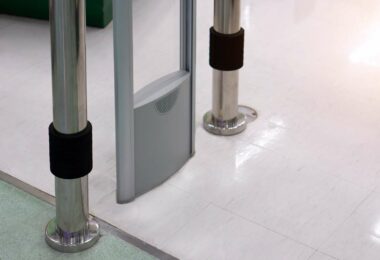Environmental challenges, a concrete case
Humans build. Over the centuries, mankind has harnessed his environment to build a roof and shelter from the seasons. It is a story in which certain materials are privileged to the detriment of others, and building techniques are constantly being perfected. From terra cotta to wood, and including stone, we have advanced from iron to steel and concrete. It is a very French specialism that is today being debated from an environmental standpoint. Building today means building cleaner. When circumstances dictate demolition, how can we make sure that the materials that have been razed are recycled properly? What are the alternatives? Let’s hear from the experts.
Freedom to build better ?
It is only late in the day that our country has come to focus on the energy consumption of a building. Let’s go back to 2009, when the Grenelle environmental laws were introduced in France. At the time, State representatives, local authorities, NGOs, businesses, and employees gathered around the same table to answer the following simple question: how can we limit our carbon footprint?
Projects were launched for the coming years, particularly in construction and urban planning. More renewable energy, solar and wind power, and fewer non-recyclable materials. Empty promises? It’s hard to judge given how time in politics shifts. In 2016, the European Parliament voted in a directive for new measures to do away with dangerous products, seek our alternative building materials and, most importantly, improve on-site sorting during demolitions. Now it is 2020 and the European Commission’s target for recycling building materials stands at 70%.
Don’t worry, France is within that ball park. But she isn’t high up in the rankings. There’s good reason for that. In the 1970s, France decided to capitalise on the expansion of its nuclear facilities, which would ultimately become the country’s sole source of electricity. As energy use and its cost climbed, so did emissions of greenhouse gases. The shift to renewable energy slipped by, with mass uptake by Scandinavian countries over the following decades. It was a decision that could also be felt in construction where these countries’ wooden homes produced very little CO2. Two different parts of Europe, two different ways to build homes. One with alternative, biosourced materials like straw, wood, and thatch. The other with concrete, in the finest French tradition.
A tradition that goes back to the Second Empire (1852-1870) when Joseph Monier, a gardener, invented reinforced concrete in 1867. Sand, water, gravel, and cement were the four ingredients needed to make it. Resources of which France had plenty, apart from cement which required a high temperature when mixing its various components (limestone, clay, and sand). And high temperatures require electricity. Reinforced concrete, therefore, is not neutral, but it is profitable, and solid once reinforced with steel.
But not enough, according to Eugène Freyssinet, a French engineer and father of prestressed concrete in in 1933. In his eyes, cables needed to be placed at specific locations within the concrete to remedy its weakness, especially when it is subject to pulling forces. For prefabricated straight girders, for example, these cables must be stretched before (pretension) or after (post-tension) casting when making complex flooring.
Concrete, therefore, is tried and tested through decades of everyday use. But what about its environmental impact? Apart from sand and water, two vital resources, concrete is subject to corrosion (of its cables) and distortion over time. Indeed, how can we recycle concrete and these light work materials?
Demolish or deconstruct to recycle ?
Before we talk about recycling concrete and materials, we need to think about the fate of the damaged building. While loss adjusters have a preference for repair, two others options present themselves to this building specialist: demolition and deconstruction. Each is very much of its time, with its own particular risks and procedures. Demolition, for example, is costly. It requires the use of multi-tonne machinery to raze the building, from bulldozers to demolition and sorting grabs, and of course the wrecking ball. This machinery is itself susceptible to significant total loss experience, covered by break of machine policies, when taken out. As well as damaging the demolition equipment, demolishing a building presents environmental risks.
Prior to 1997 when it was banned outright, asbestos was used as thermal and sound installation due to its fibrous aspect and low cost. It was banned, but was nevertheless a common feature of many homes built before the 1990s. When a building is demolished, asbestos can be spread through the air, enter the ground or water supply, and even adhere to the building’s unstable skeleton. It is a risk that requires the greatest care be taken, just as with other possible pollutants like a punctured pipe spilling its contents into the water table, for example.
A drastic solution, demolition is no longer the in-demand solution of the 20th century. Today, the preferred option is deconstruction, which makes sense. It’s methodical.
In addition to the loss adjuster, it involves one or more teams of architects and engineers to estimate the project’s viability and set a waste processing plan. This is why cleansing comes first: a systematic dismantling of light works prior to deconstruction. It is a way to reduce the risk of falls and broken glass, and to check asbestos content. Introduction over, let’s look at the deconstruction itself. Naturally, it begins at the top, using miniature remote-control machinery that weighs several tonnes and can reach inaccessible locations. They nibble away at the building bit by bit until it reaches a height accessible to earth movers with their buckets, hydraulic rock breakers, and hydraulic grabs that can take care of the rest. And just as in demolition, dust is managed through wetting. Unlike demolition though, deconstruction is progressive by nature, and makes it easier to sort debris into dedicated containers for recovery, if possible. And here begins the recycling process.
Mankind has always recycled stone. But what about concrete? It goes through crushers and sieves which work to demolish it. This is a source of total loss experience, as this industrial machinery is not impervious to breakage. One of the reasons is that concrete always contains iron. Iron in good condition, corroded on the surface but internally intact, unlike that used in fully metal structures. This is a point worth noting given that 80% of concrete in France is recycled. The gravel and sand can be recovered and used in capping layers in roads before the tarmac is laid. The gravel and sand can also be recycled to make new concrete. But 80% recycling isn’t the same as 100% recycling. The remaining 20% ends up buried or in landfills.
From demolition to deconstruction, from recycling to potential pollutants, loss adjusters must be well-versed in every step of the process.
Loss adjusters, delivering turnkey management
Before demolishing anything, loss adjusters have to assess the damage and judge whether they can be repaired. Multiple repairs may be required. From simple steel reinforcements to injections in the foundations, loss adjusters are full of ideas. And with good reason: it’s rare that these kinds of cases are fully written off. When faced with a gutted building, the first thing the loss adjuster does is compare scenarios. That’s his added value. Should the building be carefully repaired and reinforced, or simply demolished and rebuilt in line with planning laws?
Loss adjusters resolve this dilemma by relying on their technical and financial expertise, as well as by consulting a number of architects, engineers, and building economists. They can then put forward concrete, feasible proposals that take costs and deadlines into account. A turnkey service, and the result of meticulous work throughout the loss adjustment process.
When asbestos is found, the loss adjuster calls in specialist engineers to support him with this occasionally overlooked risk. As an example, let’s take the high-rise flats near Toulouse, where 0.1% of the building was infested with asbestos. Doesn’t sound like much? It’s more than 40 tonnes! It posed a major environmental risk which is absolutely not to be underestimated when working on-site. As a result, protective measures were taken to protect the environment from any pollution.
And these measures were accompanied by others, financial in nature. The loss adjuster strives to find palliative solutions for the companies that would lose their business. He includes technical parameters, scheduling, and strategic decisions tailored to the financial reality of the claim. A construction specialist, he also helps form a multi-disciplinary team to take care of potential repairs. When these prove impossible, he supervises the demolition or deconstruction to foresee all inherent risks.
The loss adjuster serves as the crossroads between various stakeholders, injured parties and managers, insurers and service providers. They all contribute their own views of the environment and its ecosystem. It must be stated that the construction industry is currently evolving to be more environmentally responsible. A kind of green washing of materials, from concrete to insulation. The thickness of concrete can be reduced by one third by using post-stressing, in which a floor with traditional formwork is strengthened with steel cables placed under tension as soon as the concrete is poured. As for thermal insulation, it can call upon existing green materials like wood wool, cotton, cork, and hemp… A lighter, well-insulated building is an optimised building that cares for the environment.
Ultimately, there is work still to be done to limit the impact of the built environment. The number of solutions is growing with the arrival of new technologies. Prototypes of biodegradable concrete are in development, made using industrial resin and green cement. We are also thinking about adding plants to roads and highways, and light-coloured roofs to limit the impact of heat. All of these different solutions share the same goal: to reduce our CO2 emissions, consume less, and build cleaner. It is a future that loss adjusters are preparing for, so that they can always find the most appropriate reparations for the challenges of their time.
Patrick LUBSZYNSKI
Material and Structure Loss Adjuster – Engineer
Stelliant Corporate Loss Adjusting
Frédéric LABARRE
Environment and Pollution Loss Adjuster



